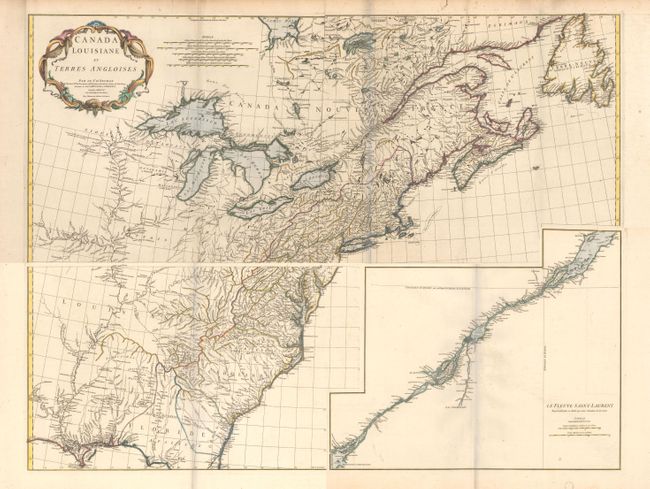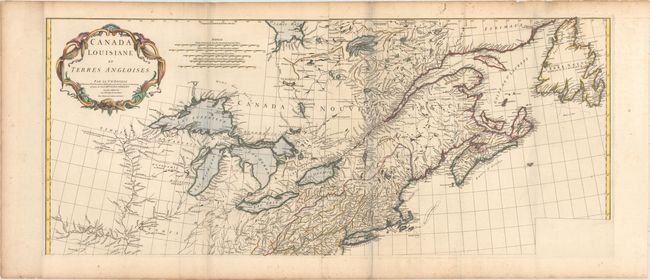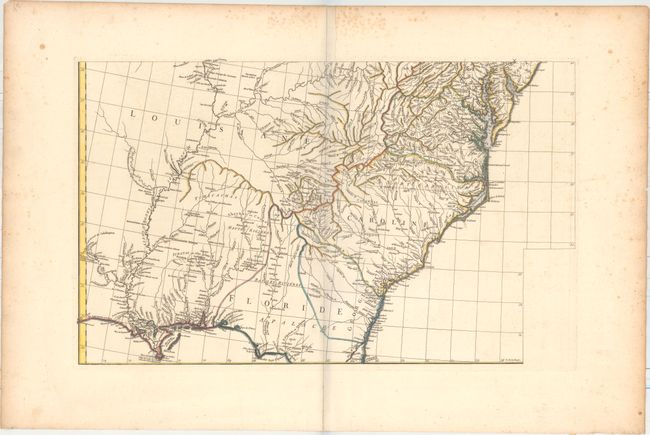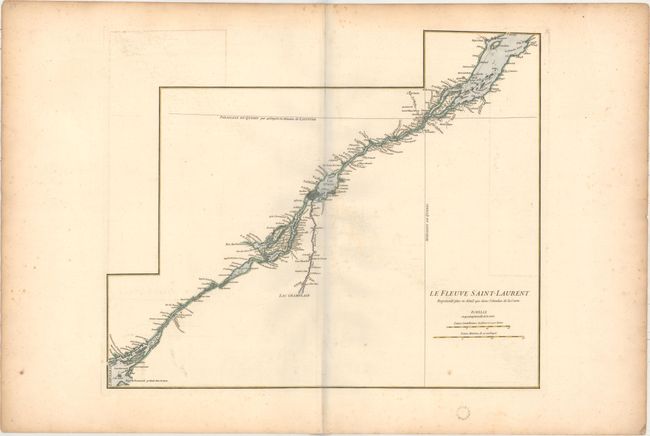Subject: Colonial Eastern United States & Canada
Period: 1755 (dated)
Publication: Atlas General
Color: Hand Color
Size:
44.5 x 18.8 inches
113 x 47.8 cm
This large-scale map covers the region from Labrador to the north of Florida, and from the Mississippi River to the Atlantic Ocean. It also extends to include the southern end of James Bay, and shows all of Great Lakes and the course of the St. Lawrence. The map provides early detail along the lower portion of the Missouri (alternately the "Pekitanoui") and the upper waters of the Mississippi. The Keweenaw peninsula is named as Kiaonan, and Isle Royale is called I. Minong. It is filled with scores of Indian tribes and villages named and located. The map was based in part on Mitchell's famous map of the United States which appeared earlier in the same year. D'Anville developed his version of the map with an emphasis on French influence on the area, omitting Mitchell's legend, references to English factories in the disputed trans-Allegheny area, and drew on French sources for additional details over the Mitchell map. The most obvious change, however, is the large inset of the St. Lawrence River basin ("Le Fleure Saint-Laurent") which appears on a separate sheet. D'Anville's usual, superb cartographic detail is seen throughout. A handsome cartouche designed by Gravelot fills the upper left of the map. On four sheets, with the top two sheets joined together.
References: Sellers & Van Ee #17; Cumming (SE) #296; Tooley (Amer) p. 316.
Condition: B+
A crisp impression on watermarked paper with faint offsetting and scattered foxing that is primarily in the blank margins. There is a small tear along the right border of the top joined sheet as well as a few edge tears at top that have been closed on verso with archival tape. An old library stamp is visible in the bottom blank margin of the St. Lawrence sheet. The bluish hue along the fold lines was caused by our scanner and is not on the physical map itself.





